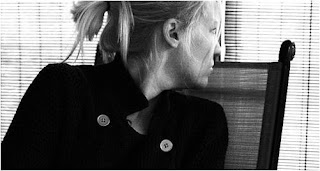TOP 10 July 2010 Nursing Board Exam Result
1.RAYAN ABOGADO OLIVA (ATENEO DE NAGA)- 86.80
2.AILEEN ANCANAN AUSTRIA DE LOS SANTOS(STI COLLEGE, INC.)- 86.40
3. ALLYCE JOANA TOLEDO DE LEON (UNIVERSITY OF SANTO TOMAS)- 86.00
ANNA VANESSA ANG GAN (UNIVERSITY OF SANTO TOMAS)- 86.00
4. ALYSSA LEONILA DELA SILVA GUIAM (CENTRO ESCOLAR UNIVERSITY-MANILA 85.80
5.CHARMAINE CAMACHO GAUIRAN (REMEDIOS TRINIDAD ROMUALDEZ MEMORIAL SCHOOL)- 85.60
VIDA THERESA SIBAYAN GUMANGAN (SAINT LOUIS UNIVERSITY)- 85.60
ABIGAIL DIAZ ICASIANO (ARELLANO UNIVERSITY-MANILA)- 85.60
WEENA MARIE BORDEOS LIM (UNIVERSITY OF SANTO TOMAS)- 85.60
JOHN JOSEPH MAYO MONTALBO (FAR EASTERN UNIVERSITY-MANILA)- 85.60
JAN MICHAEL GABIONZA ONG (OUR LADY OF FATIMA UNIVERSITY-VALENZUELA)- 85.60
JOAN DIOQUINO TEJADA (REMEDIOS TRINIDAD ROMUALDEZ MEMORIAL SCHOOL)- 85.60
6. ZYRUS RONN SAMSON BERNASOR (OUR LADY OF FATIMA UNIVERSITY)-VALENZUELA 85.40
ROUCHEL ANNE MAÑEZ BRIONES (UNIVERSITY OF THE PHILIPPINES-MANILA)- 85.40
7. PETER JAMES BONGOLAN ABAD (UNIVERSITY OF THE PHILIPPINES-MANILA)- 85.20
MERJORIE MAY MALICAY ADOLFO CEBU NORMAL UNIVERSITY (CEBU STATE COLLEGE)- 85.20
CLARENCE JOY LOZADA CUSTODIO (SAINT JOSEPH COLLEGE-CAVITE CITY)- 85.20
NICO PAULO MANIAGO DIMAL (ANGELES UNIVERSITY FOUNDATION)- 85.20
KRIS RAY ARCELO (DUMAGUIN VELEZ COLLEGE)- 85.20
STELA JOY RAMIREZ ENGADA (WEST VISAYAS STATE UNIVERSITY-LA PAZ)- 85.20
JAN CHRISTIAN GOMEZ FELICIANO (UNIVERSITY OF SANTO TOMAS)- 85.20
JOSE PAOLO JULIAN GALEON TARLAC STATE UNIVERSITY (TARLAC COLLEGE OF TECH.)- 85.20
PAULO KRISTOFFER LUMBA (MACASINAG DE LA SALLE UNIVERSITY-HEALTH SCIENCES INSTITUTE)- 85.20
JOY ANN ACIERTO TAN (NOTRE DAME OF DADIANGAS COLLEGE) 85.20
EMER JOY TAPIC VALE (UNIVERSITY OF BOHOL)- 85.20
8. HANA KIRSTIE SAN MIGUEL ABELLO (UNIVERSITY OF THE PHILIPPINES-MANILA)- 85.00
KEA TENA CAPIO (UNIVERSITY OF SANTO TOMAS)- 85.00
ANA FRANCESCA CABALLERO CENTENO (UNIVERSITY OF SANTO TOMAS)- 85.00
GRACE CECILE WE CO (UNIVERSITY OF THE PHILIPPINES-MANILA)- 85.00
MICHAEL PRINCE NOTORIO DEL ROSARIO (LORMA COLLEGE)- 85.00
ROUELLA CHRISTINA MARTIN FAJARDO (UNIVERSITY OF SANTO TOMAS)- 85.00
JOE MARI ABELLA FLORES CEBU NORMAL UNIVERSITY (CEBU STATE COLLEGE)- 85.00
DONNA MAY SISON FRONDA (SAINT JOSEPH COLLEGE-CAVITE CITY)- 85.00
RENAN JAMES SACE LIM (UNIVERSITY OF SANTO TOMAS)- 85.00
ROMINA TAN MANALOTO (OUR LADY OF FATIMA UNIVERSITY-QC)- 85.00
MARIAN SHERYL FLORES MILO (SAINT LOUIS UNIVERSITY)- 85.00
MARIA KRISELDA PEREZ ROSALES (LYCEUM OF THE PHILIPPINES UNIVERSITY-BATANGAS,INC) 85.00
CRISTINA GAN SATIADA (CHINESE GENERAL HOSPITAL COLLEGE OF NURSING & LIBERAL ARTS) 85.00
LAURENCE LESTER GAMBOA TAN (UNIVERSITY OF SANTO TOMAS)- 85.00
ELISE CARA KAW TENG TRINITY UNIVERSITY OF ASIA (TRINITY-QC)- 85.00
MARIE KATHRINA TORRALBA TOJONG (UNIVERSITY OF THE VISAYAS-MANDAUE CITY)- 85.00
JAYLYN GABRILLO VILLAFANIA (SAINT LOUIS UNIVERSITY)- 85.00
9. JAMELA MONTOYA ARCILLA (FAR EASTERN UNIVERSITY-MANILA)- 84.80
CZARINA MYRNELLI MAMORE BUENAFE (NORTHWESTERN UNIVERSITY)- 84.80
ARCEL TIATCO CABIGTING (ANGELES UNIVERSITY FOUNDATION)- 84.80
ELAINE KATRINA SIGALAT CALA (UNIVERSITY OF SANTO TOMAS)- 84.80
JULIE ANN DEL ROSARIO CLARIN (UNIVERSITY OF SANTO TOMAS)- 84.80
ANCEL RIVERA DE GUZMAN (HOLY ANGEL UNIVERSITY)- 84.80
ELEANOR DELOEG DELA PAZ (SAINT LOUIS UNIVERSITY)- 84.80
RIA LEAH OROPESA ESPORLAS (UNIVERSITY OF PERPETUAL HELP SYSTEM DALTA-LAS PIÑAS)- 84.80
ELAINE MEDINA LAPAAN (SAINT LOUIS UNIVERSITY)- 84.80
A NICO NAHAR IDRIS PAJES (ATENEO DE ZAMBOANGA)- 84.80
ANA JESKA SANA PEÑARANDA (WEST VISAYAS STATE UNIVERSITY-LA PAZ)- 84.80
JAN ROLAND CASINTO POMUCENO (NOTRE DAME OF DADIANGAS COLLEGE)- 84.80
ANGELINE VILLAREY REMPILLO (OUR LADY OF GUADALUPE COLLEGES)- 84.80
NICAEL DELA CRUZ SALAZAR (PAMANTASAN NG LUNGSOD NG PASIG)- 84.80
FERIE ANGELICA YVAN SORIANO SILVINO (FAR EASTERN UNIVERSITY-MANILA)- 84.80
IVY BARRETE SUSVILLA CEBU NORMAL UNIVERSITY (CEBU STATE COLLEGE)- 84.80
KARA DENEICE SANTOS TUERES (OUR LADY OF FATIMA UNIVERSITY-VALENZUELA)- 84.80
ACE BRIAN SAMANIEGO VERALLO (OUR LADY OF FATIMA UNIVERSITY-VALENZUELA)- 84.80
10. ABEGAEL PANCILES BACOL (MANILA DOCTORS COLLEGE)- 84.60
RAMON CARLO ARPON BARING (CENTRO ESCOLAR UNIVERSITY-MANILA)- 84.60
ROBERT IBEN BARIT (MEDICAL COLLEGE OF NORTHERN PHILIPPINES)- 84.60
LIVIA DEDOROY BARRIESES (RIVERSIDE COLLEGE)- 84.60
MARIA VIRGINIA CINCO CUAYZON (OUR LADY OF FATIMA UNIVERSITY-VALENZUELA)- 84.60
KATHLEEN ANNE PALANCA DE LEON (CHINESE GENERAL HOSPITAL COLLEGE OF NURSING & LIBERAL ARTS)- 84.60
MARK ANTHONY SANTOS DE LUNA (OUR LADY OF FATIMA UNIVERSITY-VALENZUELA)- 84.60
EDWIN SUAREZ DEL ROSARIO II (UNIVERSITY OF SANTO TOMAS)- 84.60
EUNICE PABLICO EMPEÑO (UNIVERSITY OF SANTO TOMAS)- 84.60
GREG ELY CAMBAYA FLORES (OUR LADY OF FATIMA UNIVERSITY-QC)- 84.60
MARCIUS ANTONIUS BALCITA ( GACAYAN UNION CHRISTIAN COLLEGE)- 84.60
APRIL JOY DIANE GARING GALICIA (WESLEYAN UNIVERSITY-PHILIPPINES-CABANATUAN CITY)- 84.60
MARY JOY SARROSA GARBANZOS (UNIVERSITY OF SAINT LA SALLE)- 84.60
ANGELI PALISOC GARCIA TRINITY UNIVERSITY OF ASIA (TRINITY-QC)- 84.60
SARA JANE JAIDE LABBAY (ATENEO DE ZAMBOANGA)- 84.60
MICCA FLORES LAGLEVA (UNIVERSITY OF SANTO TOMAS)- 84.60
RAZEL MAE NACUA LIBOT CEBU NORMAL UNIVERSITY (CEBU STATE COLLEGE)- 84.60
ALEXANDRA BASAÑEZ MACALINTAL (ATENEO DE ZAMBOANGA)- 84.60
KRISTINE DE LA CRUZ MACASERO CEBU NORMAL UNIVERSITY (CEBU STATE COLLEGE)- 84.60
CELESTE IMPERIAL MADUEÑO (MANILA DOCTORS COLLEGE)- 84.60
SALLIE RIA DELOS SANTOS (MALAYAN LYCEUM OF THE PHILIPPINES UNIVERSITY)-MANILA 84.60
JAN PAULA ESPIRITU MARTINEZ UNIVERSIDAD DE MANILA (CITY COLL. OF MANILA)- 84.60
KIMBERLY CHAN MENDOZA (SAINT LOUIS UNIVERSITY)- 84.60
MARIE PAZ LACANLALAY NOLASCO (MEDICAL COLLEGE OF NORTHERN PHILIPPINES)- 84.60
ROBELOU LIZANO ONG (FAR EASTERN UNIVERSITY-MANILA)- 84.60
JODELLENE FERNANDEZ PEROCHO (CENTRO ESCOLAR UNIVERSITY-MANILA)- 84.60
CLINTON ROSITA RABADON (BICOL UNIVERSITY-POLANGUI)- 84.60
ERIKA GENINA DAVID RONQUILLO (HOLY ANGEL UNIVERSITY)- 84.60
DIOLIZA MONTENEGRO SACIL UNIVERSIDAD DE SANTA ISABEL (COL DE STA ISABEL)- 84.60
KATHERINE MEJIA VIACRUSIS TRINITY UNIVERSITY OF ASIA (TRINITY-QC)- 84.60
and others...
NURS0710se225.
July 2010 NLE Top Performing Schools
July 2010 NLE Top Performing Schools Cool Buster
 -Test the person’s ability to recognize objects by feeling their forms, sizes and weights.
-Test the person’s ability to recognize objects by feeling their forms, sizes and weights. mber by having it traced on the skin.
mber by having it traced on the skin. -Support the person’s
-Support the person’s
















